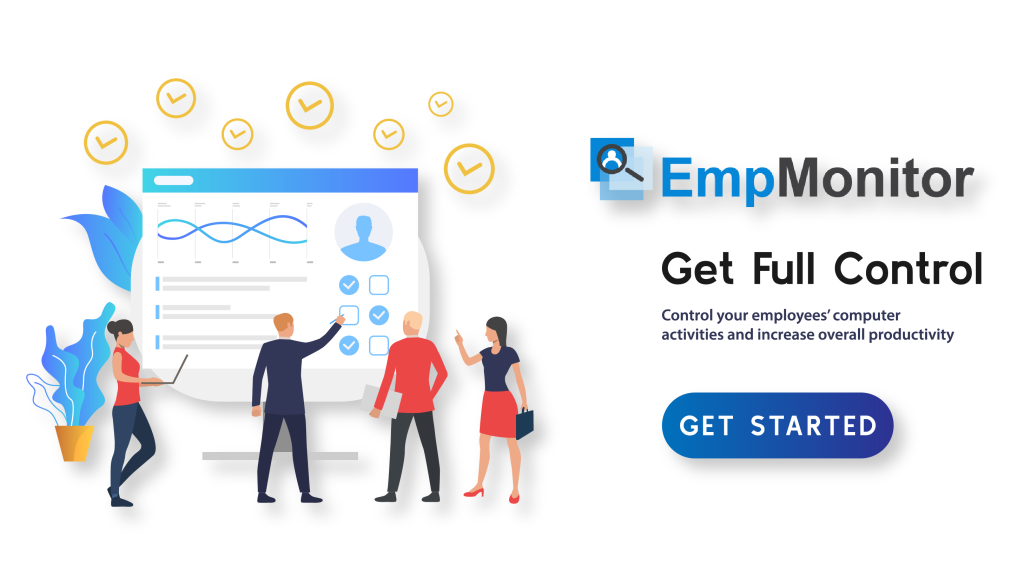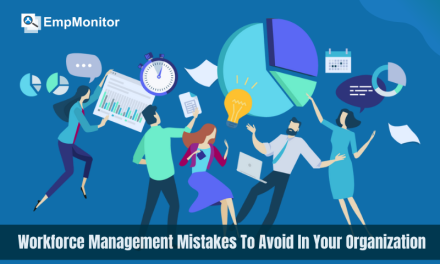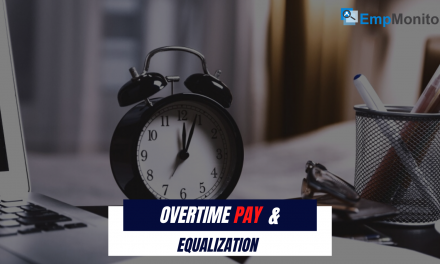HR frequently struggles with successful performance goal formulation, but poor objectives make each phase of the performance management process more challenging – continuous check-ins, evaluation and calibration, and reviews. As a result, employee performance suffers, engagement suffers, and company objectives get overlooked.
There are several theories on how to improve employee effectiveness. Some people feel that creating well-built performance goals while neglecting employee well-being is a prominent strategy. Others completely disregard defining goals in favor of ensuring that staff is at ease. However, neither of these techniques will optimize employee performance.
Setting employee performance objectives that include their aspirations while also helping the organization is not difficult, considering its importance. HR executives must get the performance goal-setting process right at the start of the year rather than waiting until the end of the year to address the previous year’s performance.
Here are four methods for achieving performance objectives to increase effective job performance.
What are the Objectives of Employees?
Employee performance goals are precise and quantifiable objectives that managers establish with employee involvement. These objectives may include specific, concrete aims connected to a company’s staff function or career development possibilities and new skill sets. Many businesses not only assist employees in setting and tracking their objectives. But also give resources to help them achieve those goals.
Depending on your job, employee objectives are beginning to assess performance and reward individuals. If you’re a salesperson, your target may be to meet your portion, or it could be to sell a certain amount of tickets if you’re on the development team.
The nature of an employee’s ambitions will likely alter and evolve as they attain their objectives or as their role in the firm changes. As a result, it is critical to create, examine, and review goals frequently for individuals besides teams. These objectives keep staff on track and engaged while also providing you with objective targets to measure their progress.
Employee goals help inform team members and management about how well an employee is performing and the path to achieving their professional development goals.
What is the Significance of Performance Review Objectives?
Employee performance review objectives might offer a variety of advantages:
- They can aid in the improvement of your company’s bottom line.
- They can increase employee morale by providing them with a sense of purpose and achievement.
- They assist your firm keep personnel because when your team members meet their performance targets, they will feel more successful and satisfied with their jobs.
- They increase employee engagement by providing a goal for employees to work and achieve goals.
- They increase productivity by providing employees with a clear image of what is to be expected of them, rather than leaving them to guess and complete their everyday activities without a clear route to success.
- They maintain staff enthusiasm by providing favorable feedback from management.
Set Goals With Your Employees Rather Than For Them-
Performance management is all about obtaining accurate results and understanding how to guide your employees toward attaining them. Nonetheless, we regularly come into organizations that provide their candidates with lengthy, ten-page job descriptions that fail to describe the role’s objective. A job description should include more than simply a list of duties; it should also involve expectations for output, outcomes, and any potential changes that an employee may face on the job.
It’s tough to inspire employees if they don’t feel consulted, heard, or given the time to comprehend why they’re doing what they’re doing. According to a recent poll, 83 percent of respondents did not believe their organization’s performance goals were open enough, and as a result, work performance suffered.
So, when you create employee performance goals, make sure everyone understands what tasks and results are associated with the role.
Set Performance Goals that are Congruent with the Company’s Goals-
Employee goals should be related to the company’s growth plan and the employee’s particular abilities. It is easier for an employee to focus and achieve their goals when they understand how their position and tasks influence or contribute to the performance of that company. As a consequence, both the company and its employees benefit from its success. Employees generally accept additional accountability when corporate goals and strategic objectives are associated with employee performance goals.
Employees will be more willing to take on more challenging jobs. If they believe their efforts will have a direct influence on the success of the firm. As a consequence, continually stating company goals may help people stay focused on their objectives. Furthermore, reminding employees of the company’s mission and vision frequently may help them stay on track with the organization’s goals.
Checkout our latest blogs
What are Qualities of a Good Leader- 25 Unique Traits List
How To Defeat Unethical Behavior of Employees In the Workplace
Work-Life Balance 101: How To Stay Positive In a Negative Work Environment
Set SMART Objectives-
They are referred to as SMART objectives when you develop goals that assist create a system to track and assess progress, which encourages the employee and organizational success. Setting SMART objectives gives employees a better grasp of the goal, its purpose, and why it matters. Setting objectives without previous planning is useless. As a result, today’s businesses place a premium on the notion of SMART goal planning. The concept of SMART objectives is straightforward, and you will find many “smart goal” examples around you daily. The term SMART stands for:
S: Specific
Make your goals as clear and detailed as possible. When you first meet with the employee and ask them about a target they want to attain, their response may be unclear at first (“I want to do better on sales calls”). However, the more explicit the employee’s intended objective (“I want to raise my number of units sold”), the more you may assist them to comprehend the procedures required to attain it.
M: Measurable
What proof will you have to show that you are making progress toward your goal? For example, if your objective is to manage a development team for a start-up tech business, you might track your success by the number of management jobs you’ve applied for and interviews you’ve had. Setting milestones along the route will help you to re-evaluate and modify your course of action as needed. Remember to reward yourself in little but meaningful ways as you reach your milestones.
Empmonitor-
THE PERFECT TIMEKEEPING APP:
EmpMonitor is an employee monitoring software that helps in time tracking applications with a plethora of functions. Here are some of the essential aspects to consider that EmpMonitor offers.
TIMESHEET MANAGEMENT:
A timesheet is a feature that keeps track of every employee’s clock-in and clock-out times. It devises a function that automatically activates when employees switch on their computers, and the system records the time as a clock-in time. You may also classify the timesheet records based on locations and departments.
PRODUCTIVITY CALCULATION:
It calculates on the activity breakdown report EmpMonitor shows total office hours, active work hours, idle work hours, productive and nonproductive hours, and neutral hours. Individuals who wish to go further into the data and analyze productivity numbers can use EmpMonitor to perform employee performance tracking and get a detailed analysis. Productivity reports may help you keep track of how your company is performing daily.
COMPREHENSIVE REPORTING:
When it comes to reporting, EmpMonitor helps you to maintain tabs on the productivity of your staff. You will observe if your employees are effectively managing their time to complete tasks on time. You may examine workers’ daily work reports from several departments.
MANAGEMENT OF PROJECTS:
With EmpMonitor, you can keep track of whatever tasks your team is working on so that you can plan and manage new projects for your company as needed. It keeps real-time track of employees’ actions.
In addition, if the work is critical, you should notify them as soon as possible and offer them guidance on how to proceed.
Overall, EmpMonitor is one of the finest software you will ever use. One may quickly manage the timesheet and view the productivity data without any manual entries or computations.
A: Achievable
Did you know that many goals go unachieved because they appear to be tough to achieve? Many others remain in the air because they are arrogant.
It is best to be aware that there will be difficult jobs to complete and that you will have no option but to accomplish them. We all want to be the first to accomplish something, and while this can be motivating for some, establishing nearly unattainable performance goals might irritate the team. So, to prevent negations and make an aim attainable, you must first analyze what you have done and achieved thus far. That will assist you in determining and comprehending the jump you wish to make, as well as taking a step back and analyzing what you have missed.
R: Relevant
This SMART objective step supplements the previous one. To achieve a goal, you must be realistic in your approach. As previously said, one can dream of landing on the moon, but only those with the means and resources to do so can make that goal a reality. In terms of strategy and achievement, your smart objective must be genuine.
It must also be relevant. One must determine whether it is consistent with your organization’s goal. Starting new projects and growing are also beautiful times, but they must be a branch of an existing concept rather than a cumbersome addition.
Consider the following questions:
- Is your SMART objective attainable?
- Do your goals appear to be relevant?
- Is it feasible given present resources and timelines?
- Can you commit?
If you answered “Yes” to the above question, you are on the right track to reaching your wise objective.
T: Time-Limited
Every goal needs a target date, which provides a deadline to focus on and something to work to obtain. This component of the SMART goal criterion prevents daily chores from taking precedence over long-term performance goals.
The SMART objective must be time-bound, with a start and end date. If the goal is not time-bound, there will be no sense of urgency and, as a result, less desire to attain it.
A time-bound objective will generally provide answers to the following questions:
- When?
- What can I do in six months?
- What can I do in six weeks?
- What can I do today?
This SMART approach to employee performance objectives gives focus and direction to employees and managers while also serving as an incentive. It may also plan particular learning activities, such as courses, seminars, or coaching, to ensure the success of any given goal.
It may also plan particular learning activities, such as courses, seminars, or coaching, to ensure the success of any given goal.
Establish a Goal-Oriented Culture-
Achieving goals does more than merely increase meaningful output. Employee engagement improves as a result. An employee feels happy when they consistently meet their goals and gain enjoyment from the act of doing their job.
So, why limit yourself to merely performance targets? Encourage staff to utilize SMART objectives in all aspects of their work. At the outset of a new project, ask them to go through the process of setting quantitative, time-bound performance goals. Every team member should have a clear vision of how they want their job to turn out.
You may also match performance goals with an employee’s career development aspirations. They can meet with their boss to discuss the talents they want to hone and the challenges they want to take on. Both sides can then collaborate to establish a professional development plan that the employee can implement based on their work experiences.
The Ultimate Goal is to Achieve
Performance goals are an effective tool for driving strategy implementation. Leaders must go beyond the presenting knowledge of traditional goal setting and established procedures to realize their full potential. Setting objectives as a best practice in any company lays the groundwork for the organization’s success. The trick is to strike a balance between motivation and objective difficulty – the performance goals should be set high enough to promote good performance while remaining accessible.
Setting unreasonable and inappropriate goals can contribute to tension and worry, as well as staff turnover. That, in turn, will have an impact on the company’s growth. However, if done correctly and with a solid framework, goal planning may enhance employee productivity and alter company performance as a whole.













